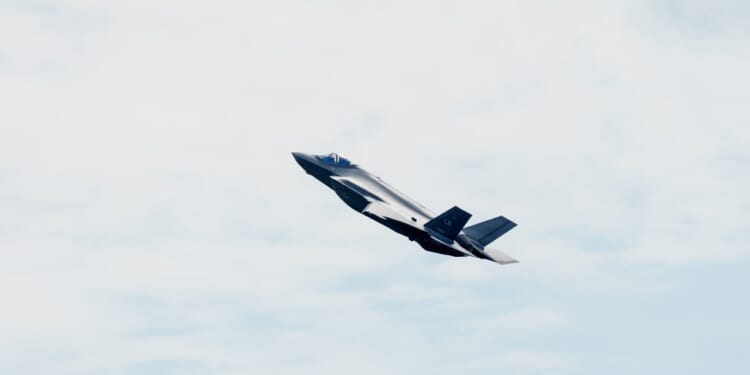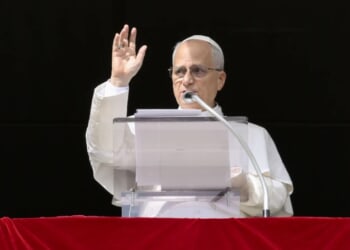Even as Germany is intent on buying more F-35s, it has not abandoned its plan to purchase extra Eurofighter Typhoons—or its commitment to the FCAS sixth-gen fighter program.
Just days after it was announced that Germany would purchase at least 20 additional Eurofighter Typhoon jet fighters in a deal valued at €3.75 billion ($4.36 billion), reports have circulated that Berlin also approved a plan to increase its order of the Lockheed Martin F-35 Lightning II by 15 aircraft. That second deal was purported to be around €2.5 billion ($2.9 billion), according to the German magazine Der Spiegel, which first broke the news of the planned acquisition.
These purchases are part of the most significant defense spending increase for the Luftwaffe, Germany’s Air Force, since before the end of the Cold War.
Germany Is Building Its Own F-35 Fighters
Even though Germany is one of the lead partners with France and Spain, along with support from Belgium, on the Future Combat Air System (FCAS) program, which is developing a sixth-generation manned fighter, Berlin is committed to modernizing its air force as part of its defense spending increase that began after Russia launched its invasion of Ukraine in February 2022. Germany had once been among the most significant military powers in the NATO alliance, but after the end of the Cold War, it significantly reduced its defense commitments.
In 2022, Germany ordered 35 Lightning II multirole fighters, which are slated to replace its aging fleet of Panavia Tornado fighters that first entered service in the 1980s.
Several factors led to Berlin’s adoption of the fifth-generation fighter, with the Tornado’s age being one of the key factors. That Cold War-era aircraft “currently performs the NATO nuclear-sharing mission from Büchel Air Base in Rhineland-Palatinate,” Aerotime explained.
Germany needed a new fighter to fill that role, and the F-35A, the conventional take-off and landing variant of the Joint Strike Fighter, met the criteria. In addition, in 2023, Lockheed Martin began construction of an F-35 Integrated Assembly Line (IAL) in Germany. Earlier this year, German defense conglomerate Rheinmetall began center fuselage production for the F-35 at its Weeze Facility. Including Germany’s industry in the strategic partnership with Lockheed Martin and Northrop Grumman has effectively ensured Berlin’s commitment to the program.
Production of the Luftwaffe’s first F-35s began in 2024, and the current timeline calls for it to receive the initial aircraft by the second half of 2026. As with past deliveries of the Lightning II, those aircraft will likely head to a US Air Force base, where they will be used to train German pilots on the aircraft. Delivery of operational F-35s to Germany will follow, with full operational capability now on track to be reached by the end of this decade.
The additional 15 F-35s will follow in the early 2030s.
“Preparations to host the F-35A are already underway at Büchel Air Base, including hardened shelters, communications systems, and nuclear security infrastructure upgrades,” Aerotime added.
Germany Wants to Buy More Eurofighters, Too
Even as Germany is extending its F-35 purchase, it also will move forward with its Eurofighter Typhoon add-on order. The Tranche 5 Eurofighter aircraft will be delivered beginning in 2031, with plans calling for the order to be completed by 2034.
The Luftwaffe currently operates approximately 138 Eurofighter Typhoons, which form the backbone of its combat aircraft fleet. The German air service has been upgrading its capabilities by replacing the older Tranche 1 Eurofighters with the newer Tranche 4 models, as part of Project Quadriga military enhancement efforts in 2020.
German Chancellor Olaf Scholz announced Germany’s intent, as a NATO member, to acquire the aircraft at the ILA Berlin Air Show 2024. The aircraft will be built in Manching, near Munich.
About the Author: Peter Suciu
Peter Suciu has contributed over 3,200 published pieces to more than four dozen magazines and websites over a 30-year career in journalism. He regularly writes about military hardware, firearms history, cybersecurity, politics, and international affairs. Peter is also a contributing writer for Forbes and Clearance Jobs. He is based in Michigan. You can follow him on Twitter: @PeterSuciu. You can email the author: [email protected].
Image: Shutterstock / Sergey Kohl.


















